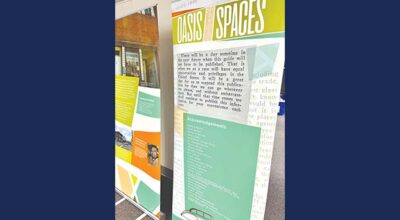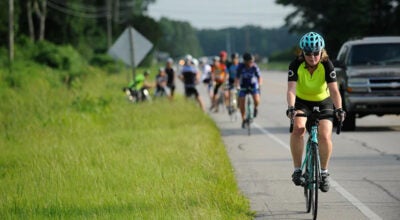Stormy weather
Published 7:52 pm Friday, May 8, 2015
This weekend’s weather in eastern North Carolina could be termed Lena Horne weather.
Horne is famous for singing “Stormy Weather.” That’s the kind of weather than is forecast for today through Monday, according to the National Weather Service’s office in Newport.
The remnants of Subtropical Storm Ana, a low-pressure system that began moving up the East Coast earlier this week, are expected to bring thunderstorms, strong winds and heavy rainfall to the coastal region through the weekend. Inland, conditions are expected to be less hazardous but prevalent during the weekend.
Ana is the first named storm of the 2015 Atlantic Ocean hurricane season. Officially, that season begins June 1. As of late Friday morning, Ana, which had been drifting slowly north-northwestward toward the Carolinas, was stationary, according to a NWS advisory.
Ana, packing 45 mph-sustained winds, is expected to drift slowly west toward the South Carolina coast through this weekend, according to NWS advisories. Gusty east-northeast winds and rough surf are likely from Cape Lookout southward. Locally, heavy rain will be possible, along with the threat for isolated tornadoes through Monday, according to the NWS office in Newport.
Ana is expected to produce rainfall accumulations of 2 to 4 inches, with isolated amounts of 6 inches, over eastern portions of North Carolina and South Carolina through the weekend, according to a NWS report. The combination of storm surge and the tide will cause normally dry areas near the coast to be flooded by rising waters. The water could reach 1 to 2 feet above ground at times of high tide in coastal areas from Cape Hatteras, North Carolina southward through South Carolina.
The NWS advises that when making safety and preparedness decisions, do not focus on the exact forecast track as there are inherent forecast uncertainties that must be taken into account.
During a presentation at the North Carolina Estuarium in the spring of 2011, Greg “Rudi” Rudolph, a shore protection manager for Carteret County at the time, said when it comes to hurricanes, area residents should keep one factor in mind: location, location, location.
During his Tropical Cyclones 101 presentation (a hurricane is a tropical cyclone), Rudolph said key factors to keep in mind when keeping an eye on a hurricane are intensity, duration, approach (location), surge and tide. With those factors in mind, the worst-case scenario for Washington and nearby areas would be a major hurricane (Category 3, 4 or 5 on the Saffir-Simpson scale) that’s slow-moving, approaches from the south or southwest, has major storm surge associated with it and strikes at high tide.
Because the strongest area of a hurricane (which rotates in a counter-clockwise direction) is its northeast quadrant, the northeast quadrant of hurricanes passing east of Washington miss the city, he said. A hurricane coming from the south or southwest of Washington means that northeast quadrant will be the storm’s leading punch when it strikes the city, he noted.
“A couple or 10 miles can make a big difference,” Rudolph said about the effects of a hurricane on an area.
“The moral of the story here is that if it’s a tropical storm coming straight for Little Washington — panic. If it’s a category 3, 4 or 5 — really panic. You know — evacuate,” Rudolph said.






